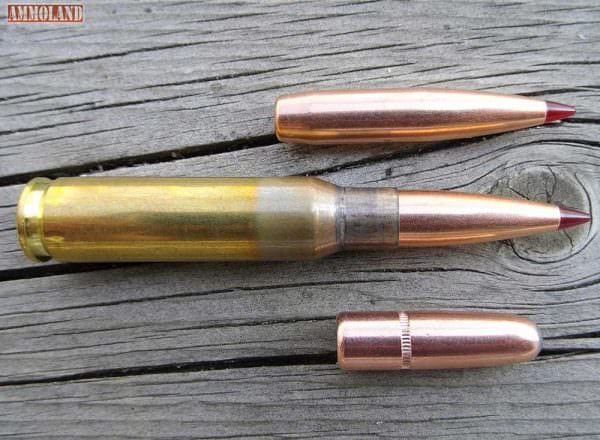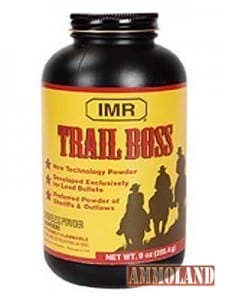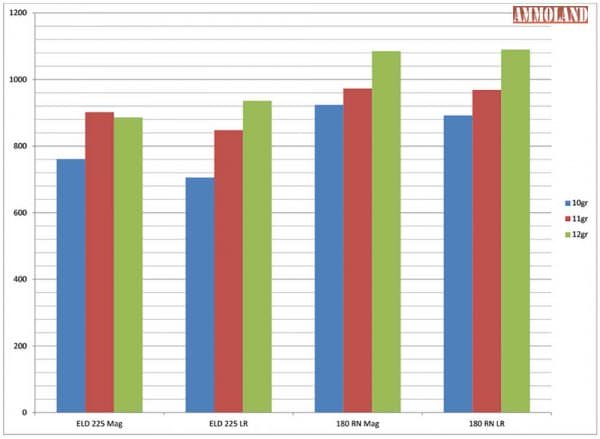

| Online: | |
| Visits: | |
| Stories: |

| Story Views | |
| Now: | |
| Last Hour: | |
| Last 24 Hours: | |
| Total: | |
Subsonic .308 Win Handloads – Testing & Understanding
By Josh Wayner
Editors Note : Caution, Reloading can be very dangerous, read our “Reloading Disclaimer“.


USA – -(Ammoland.com)- Understanding the principles of making subsonic ammunition takes time and a bit of creativity. I got into the game of subsonic shooting a few years back when I was debating taking a dive into suppressor ownership. Despite the fact that I never actually got a can, I learned a great deal about what it takes to not only make subsonic ammunition work in a rifle but some tips and tricks for maximizing your gear and reloading economy.
There are two things that we’re looking for when we get into the subsonic game. First it is obviously a working velocity below the speed of sound. This may seem like a no-brainer, but it is my belief that truly functional subsonic ammunition needs to always be under the speed of sound, not flirting with it.
As a result, I have found that a velocity of 1050fps at the muzzle is a nearly optimum speed for any condition range. Granted, you may pick up or lose some speed given external variables, but fear not as there isn’t that big of a difference in performance at the effective range of most subsonic cartridges.
The second thing to concern yourself is one that often escapes people: bullet stability. The projectile must be able to stabilize in subsonic flight in order to be accurate. Again, seems like a no-brainer but I’ve seen many guys load subsonics that keyhole at 100 yards or less. You don’t want that to happen with an expensive suppressor attached.

For this article I’ll be using .308 Win ammunition in a bolt action as my example as it is easily made subsonic and is a good cartridge to begin working with.
Why not a semiauto .300 Blackout? I’m using the .308 in a bolt gun because it allows more linear testing without the variable of cycling pressure and gas bleed-off. In short, I’m using something that simply launches bullets in order to remove obstructions that could cause error.
The rifle I have has a 13.5” barrel with a 1:10 twist. This twist rate is common to many .308/7.62 rifles and is in my opinion the most versatile twist rate available for any .30 caliber bore.
Why not a 1:12? Easy. I’ve found that the 1:12 twist rate isn’t fast enough to stabilize most projectiles moving at subsonic speeds. You are almost guaranteed a keyhole from a 1:12 bore.
The tighter twist rate enables the slow-moving bullets to gain a bit more gyroscopic stability in flight and this is a huge thing when we’re dealing with low pressures and short ranges.

In this test I’ll be loading several bullet options from Hornady and I’ll be using the premier subsonic powder on the market: IMR Trail Boss Powder. Trail Boss (TB) was originally designed to work in cowboy action cartridges like .38 Special and .45 Colt. I load lots of .38 with Trail Boss and love how it works. The kernels of powder look like little Cheerios at first glance. This powder is suited to .308 because it is made to take up lots of internal space inside the case. Fifteen grains of TB is enough to nearly fill a .308 case. What this provides is even and consistent cartridge ignition.
Other pistol powders will not fill the case and this can result in erratic velocities or dangerous pressure curves.
There are several schools of thought when it comes to picking the right bullets for subsonic use. Most are familiar with the use of heavy match bullets in the .300 Blackout and rightfully so. The 1:7 or 1:8 twist rates of the .300 Blackout offer themselves to reliable and accurate performance with a truly massive range of bullet weights.
The bullets I’ll be using are the new Hornady ELD Match 225gr and the more traditional 180gr RN Interlock. These bullets each represent an extreme on the scale of shape and performance. The 180gr RN is a fairly archaic design and would be right at home in vintage .30-03 loadings dating back over one hundred years while the 225gr ELD bullet represents the very cutting edge of projectile technology in our current age. So which one will fare better at the same speed?

Since our target velocity is 1050fps, I began load development starting high and working my way down. Yes, you read that right. Starting high ensures that you know the ceiling of your loads given that there is a danger of getting a bullet stuck in the barrel if you start too low.
It is far better to reduce a load from 1200fps to 1050 than to start out at 600fps and accidently blow your gun up.
The information below is only for your reference. This information is solely for my rifle and my reloading setup. You will doubtlessly experience problems if you use my data in a rifle with a longer or shorter barrel. I loaded all rounds to feed from an Alpha Mags AICS pattern magazine.
I began with some preliminary research into some reloading manuals and internet forums. I’m always careful to believe what is in either for different reasons. With a rough idea in mind, I started the process with necksized Lapua Rifle Brass. I decided it best to test my handloads with both standard and magnum primers to see if there were any differences in velocity or consistency. Many people drill out their primer flash holes, but I’ve found this to be unnecessary and a hassle to inexperienced reloaders. Primers used in the test were CCI #200 Large rifle and Winchester 9 ½ Magnum.

I started the 180gr loads seated to the cannelure with 12, 11, and 10 grains of TB. I made three each with standard and magnum primers. I could’ve started a bit hotter with 13 or even 14 grains for this bullet, but I decided to keep it standard when compared to the 225gr bullets.
Because of the length of the 225gr bullet, I became concerned with the available space inside my Lapua brass. I originally wanted to start with 13gr of TB, but I heard crunching when I seated the bullets to mag length. This is a huge problem if you’re using TB, as it should not be compressed at all. As such, I decided it best to use the same charge weights as the 180gr load. Just like I mentioned earlier, three of each charge weight were loaded with both magnum and standard primers.
Loads were tested using an Oehler 35P chronograph at a distance of five feet from the muzzle. Weather conditions were pleasant at 50 degrees Fahrenheit. The loads were tested for both accuracy, stability, and velocity at a proving range of 25 yards and for accuracy only at 100 yards.
My data gave me a bit of a surprise because my starting loads of 12gr were pretty darn close to what I was looking for. It isn’t often that I get my way right off the bat, so I was pretty happy with the results. The 180gr load with 12gr of TB gave me an average of about 1090fps. This was close enough to my intended goal of 1050 that I decided to call it good. Not to waste a good day at the range, I fired the rest for data and received interesting results.
I found that there was no discernible correlation between velocity and standard vs. magnum primers. What I did discover about the primers was that there was a difference in regard to accuracy. I suspect that the magnum primers allow for a more consistent powder burn due to the increased flash duration. The magnum primer load in the 180gr/12gr load was substantially more accurate at 100yds than the standard LR primer variation. I managed to group impressively at 100 yards using a Trijicon Reflex sight. This isn’t an ideal optic for shooting groups from a precision rifle, but I expect that I wouldn’t have done all that much better using a magnified scope.
The 180gr/12gr loads shot about 1 MOA at 100 yards and showed no signs of keyholes or tumbling. Good enough for me.
I noticed instability in the 225gr loads in the appearance of deformed entry holes at both 25 and 100 yards. The twist rate was fast enough to be accurate by most standards, but the velocity just wasn’t there while using TB and a 13.5” barrel. The fastest I got the 225gr bullet going was a load average of 936fps while at max case capacity. I suspect that I could indeed get a faster and better load out of the 225 ELD if I loaded the bullet longer and added more powder in the newly freed space in the case, but that would defeat the purpose of having a magazine fed rifle.
Getting subsonic loads to function in your rifle can be both fun and frustrating. As I learned from my testing, getting a functional load isn’t hard to do, but care must be taken to ensure proper safety, accuracy and reliability. A last suggestion for subsonic loads: don’t just start the loads high, make sure you take aim high.
About Josh Wayner:
Josh Wayner has been writing in the gun industry for five years. He is an active competition shooter with 14 medals from Camp Perry. In addition to firearms-related work, Josh enjoys working with animals and researching conservation projects in his home state of Michigan.
This post Subsonic .308 Win Handloads – Testing & Understanding appeared first on AmmoLand.com Shooting Sports News .
Source: http://www.ammoland.com/2017/03/subsonic-308-win-handloads/


